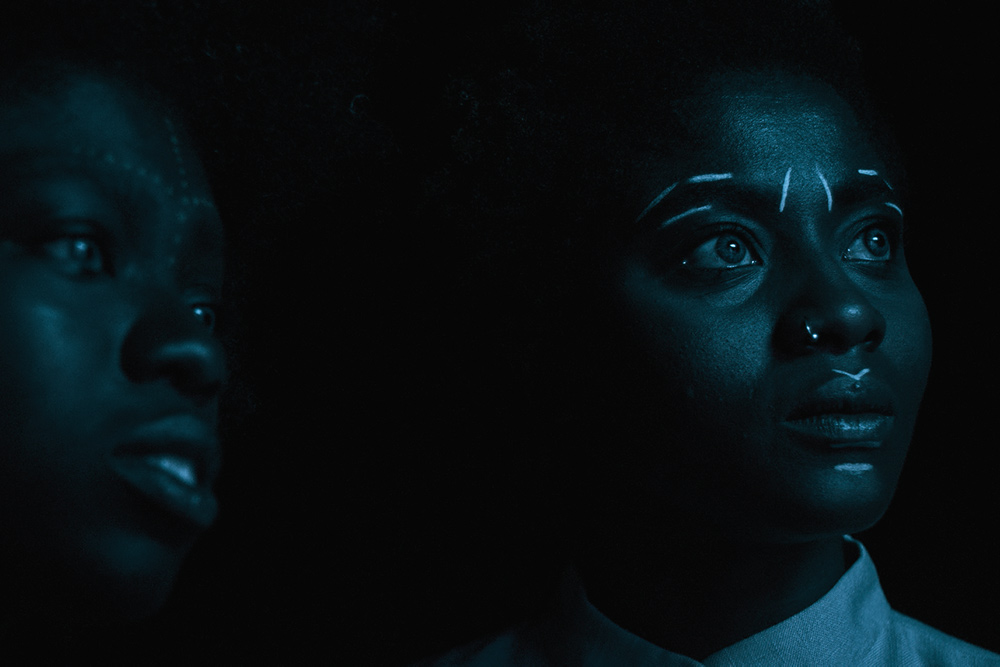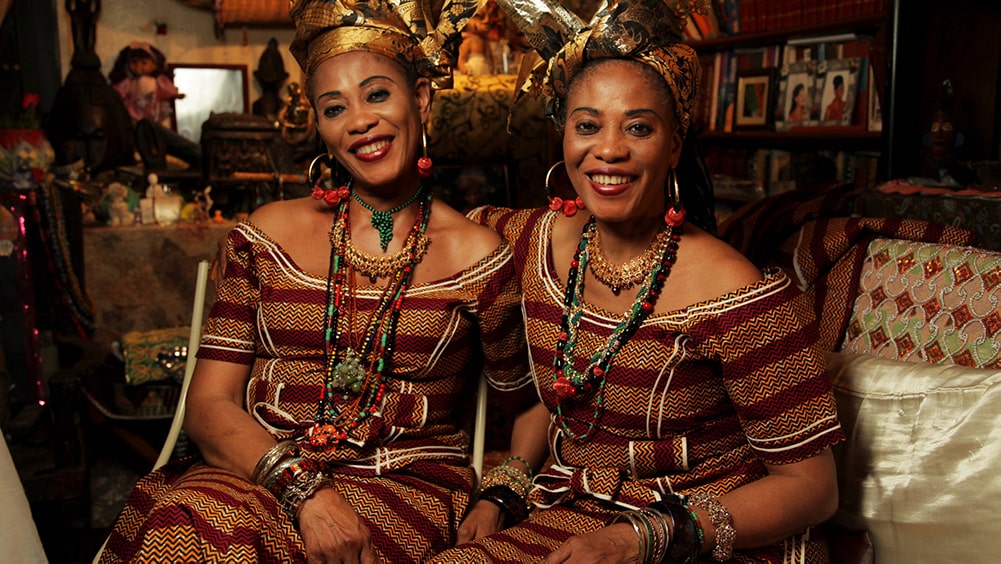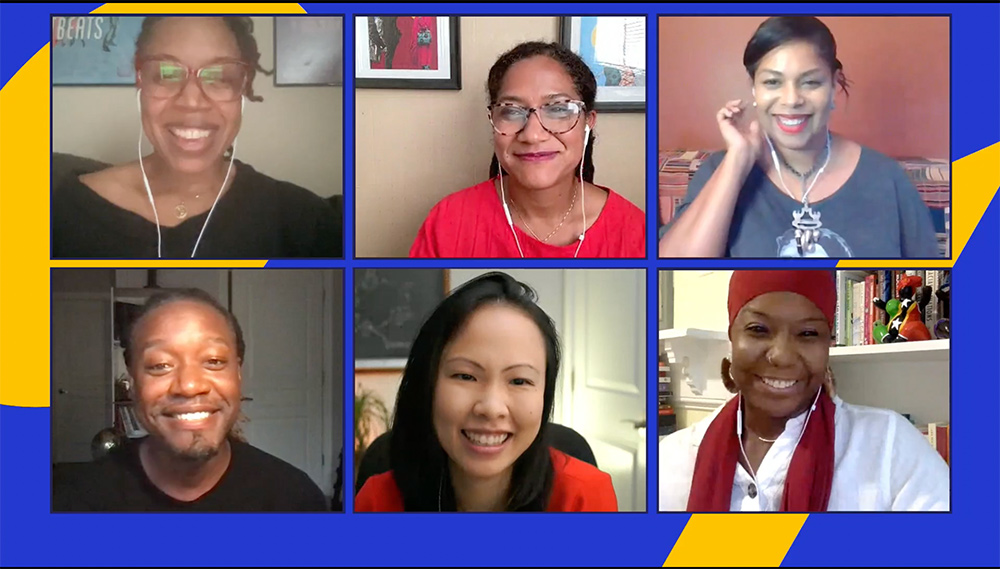The Healing Power of Black Documentary: Thoughts from the 10th Annual BlackStar Film Festival
By Anselm Beach

The 10th Annual BlackStar Film Festival, which took place in Philadelphia and online from August 3-8, could not have been timelier. After nearly 18 months of increased coverage surrounding the state-sanctioned murders of unarmed Black people and the disparities revealed in COVID-19’s impact on global communities of color, the long-held resilience of these communities has been taxed. I am no stranger to this weariness as I have personally been overwhelmed by a sense of powerlessness against the racist and white supremacist systems that continue to perpetrate and perpetuate injustice. But one should never underestimate the power of a story in the hands of the oppressed. BlackStar’s mission is to celebrate “the visual and storytelling traditions of the African diaspora and of global communities of color, showcasing films by Black, Brown and Indigenous artists from around the world.” The spirit of the festival and the stories therein revealed and revelled in the subversive, healing, and liberative power found in the creative practice of telling one’s story. The films and programming discussed in this article will showcase the many ways that the festival’s Black, Brown and Indigenous documentary filmmakers and their subjects use their stories to resist the forces that war upon their humanity and to gain ground in the struggle for liberation.
The Present in Conversation with the Past
There is a practice in hip-hop music production known as “cratedigging” that takes its name from how DJs and producers literally dug through crates of old vinyl records looking for obscure tracks, sounds, and musical moments to build into their beats. This process accomplished two things: it allowed the DJ to honor past artists—both popular and obscure—by bringing their music back into the light of music appreciation. It also allowed the DJ to deconstruct, reframe, and repurpose the music of the past to create a wholly original groove. This concept of drawing from one’s past to converse with the present is deeply rooted in the traditions of Black and Indigenous social and historical engagement, and it was a prevalent theme among many BlackStar films.
Musician and filmmaker Siji Awoyinka’s Elder’s Corner: A Musical Voyage of Discovery is a great example of this relationship between past and present. The story told within is sparked by a cratedigging experience Awoyinka shares with a close childhood friend. London-born to Nigerian parents, the filmmaker, now living in New York, is called over to hear the latest additions to his friend’s extensive collection of rare Nigerian records from the ‘60s and ‘70s. Reminded of the songs and sounds he heard while spending some of his formative years in Lagos, Nigeria, Awoyinka wonders about the musicians who created these songs: what happened to them and where are they now? So begins his journey to track down these pioneering Nigerian artists of some of Africa’s most influential musical movements. As he finds and connects with these musicians, Awoyinka learns that many of them do not own masters of their own recordings, so he teams up with a music producer to create new recordings of songs they haven’t heard or played in decades. Through interviews and excerpts from these recording sessions, we learn how these musicians captured the culture and history of a newly independent Nigeria from its golden era through the period of political and economic corruption that followed.
Two ideas coexist at the core of this heartfelt and physically moving film (seriously, try not to dance while viewing). The first is that African diasporic music often sits at the intersection of entertainment and social commentary. Whether it is the jazz/calypso fusion of highlife, the up-tempo guitar-strumming and traditional Yoruba percussion of jùjú, or the confrontive jams of Afrobeat, these musical forms gave their listeners plenty of motivation to dance while providing their musicians with avenues to reflect and comment on the tumultuous years that preceded and followed Nigeria’s independence from colonial British rule. The second is the idea that one cannot fully understand oneself without understanding where they come from. At the heart of Awoyinka’s journey is a desire to reestablish the connections to his culture and to his people that he lost when he left Nigeria and, like many first- and second-generation immigrants to Western countries, experienced pressures to assimilate into the dominant culture. Quoting a Yoruba saying, the filmmaker at one point says, “A flowing river which forgets its source will very quickly run dry.” The struggle for dignity and belonging in a society built on racism and white supremacy can be draining. Elder’s Corner makes a compelling case through its lively recording sessions and stately interviews for the revitalizing and refreshing power of learning from our elders.

A second documentary feature to engage the past in conversation with the present was festival closer Eyes on the Prize: Hallowed Ground, which recently premiered on HBO. Directed by Sophia Nahli Allison, Hallowed Ground is a reflection on and a reframing of Henry Hampton’s tour de force documentary series Eyes on the Prize. Originally airing between 1987 and 1990, Eyes chronicles the events, the people, and the spirit of the Civil Rights Movement from 1954 through 1985. At the time it was the largest mobilized effort for the civil rights of Black people until George Floyd’s murder sparked a new wave of action, advocacy and activism for Black lives across the globe. Hallowed Ground reframes the movement captured in Eyes through the voices of Black artists and activists at the forefront of today’s social justice movement. Interspersed with archival footage and painterly set pieces evocative of Julie Dash’s Daughters of the Dust, the speakers draw parallels between some of the most galvanizing events in both movements: the murders of Emmett Till in 1955 and Trayvon Martin in 2012, for example. Hallowed Ground folds these past and present movements into the continuous movement for the liberation of oppressed and marginalized people everywhere.
Where Hallowed Ground shines is in the time it takes to honor those activists whose contributions were often downplayed and at times excluded because of their identity, especially if they exposed the ways in which the movements of their day failed to disentangle themselves from patriarchy, misogyny and homophobia. They were often women and LGBTQ+ community members like Bayard Rustin, Audre Lorde, Lorraine Hansberry and Marlon Riggs. The film also mourns for the stories that were suppressed and have only recently been brought to light. One such story, told by activist and founder of #YouAreEssential Ashlee Marie Preston, is of Frances Thompson, the first woman to testify before a congressional committee, whose 1866 testimony concerning the recent Memphis riots led to the ratification of the 14th Amendment. Her story was intentionally omitted and Thompson was maligned because she was a trans woman; her identity didn’t fit the acceptable narrative for the movement of her day, and her story was robbed of its historical significance. “We’re teasing apart the things that our movement hasn’t done right, things that have been unseen that were made unseen. This iteration of movement lifts up the voices of people who had previously been silenced.” These words from Action St. Louis Executive Director Kayla Reed exemplify what allows Hallowed Ground to both stand on its own and alongside its predecessor. It pays homage to the movements that paved the way to a more inclusive now, while highlighting the way today’s Black activists are carving their own path within the greater movement for liberation.
Reclaiming our Time
BlackStar’s commitment to giving BIPOC creators a platform to reclaim the way our stories are told and recast ourselves not as objects of oppression but as agents in the shaping of our own destinies is essential to its function as a healing space for its participants and attendees. This attention to healing was exhibited by panels like “R-E-S-P-E-C-T: Balancing Power and Care in Doc Filmmaking", facilitated by Natalie Bullock Brown and Sonya Childress, whose article launched much of the work that led to this panel’s topic. The panel was one in a series of open dialogues conducted over the past 10 months by the Documentary Accountability Working Group (DAWG) inviting documentary filmmakers, participants, and stakeholders to weigh in on its values-based filmmaking framework for greater accountability in nonfiction filmmaking. The panelists came together from various spheres within the documentary community to share their own values-based approaches to empowering marginalized communities throughout the documentary process. A key theme that arose from the panelists' stories was time.
Filmmaker/folklorist Michelle Lanier shared how crucial it is for filmmakers to build in more time to investigate all possible entry points for imbalances in the power dynamic between filmmaker and subject. Through their experience as film a participant, creator/activist Twiggy Pucci Garçon encouraged filmmakers to spend time allowing participants to shape the arc and content of the story being told and be transparent about plans for their involvement in impact planning and execution. Founder and President of the Muslim Wellness Foundation Dr. Kameelah Rashad shared how “insider filmmakers” can use their power for their and their communities’ well-being by taking time to go through the four R’s—recognizing toxic social systems, reflecting on preconceived notions, resisting deficit thinking, and rejoicing in the endurance and resilience of the community. For anyone worried about what good this work would do if funders are unwilling to make time for it, Director of IDA Funds and Enterprise Program Poh Si Teng weighed in on the conversation. She challenged fellow funders to be humble and recognize the onus they share with filmmakers in considering their own positionality and power in the process of shaping the stories they tell. The conversation was riveting and left much to be hopeful for concerning the future of documentary filmmaking.

A few other films that allow their storytellers to reclaim their narratives are worth mentioning. First is Peter Nicks’ Homeroom , now streaming on Hulu. Filmed throughout the 2019-2020 school year, Homeroom follows a group of Oakland High School students through their senior year as they work to defund the police (before the phrase became the rallying cry of the previous summer) that are draining key resources for student programming from the only school district in Alameda County, CA to have its own force. Teenagers have always gotten a bad rap; these days it’s for their music, their TikToks, their style and their phone attachment. Homeroom takes these “but what about the kids” anxieties and shows the creative and subversive ways these teenagers use them to reflect on, reframe, and ultimately reclaim their stories as the adults around them continue to make decisions that endanger the very kids they worry about. Nicks positions the stars of his film as cultural commentators while capturing the joys of their youth in the midst of a pandemic.
Writer, filmmaker and Afrofuturist Ytasha Womack describes Afrofuturism as “the intersection between black culture, technology, liberation and the imagination… [and] a way of bridging the future and the past…to reimagine the experience of people of color.” Anna Zhukovets’ and Kokutekeleza Musebeni’s Door of Return, part of the "Egress: Emergence of New Identities on Space-time Journeys" collection of documentary shorts, successfully incorporates Afrofuturism into the construction of their nonfiction film to fascinating effect. Door of Return starts out like a traditional documentary, chronicling through interviews and b-roll the real stories of five Afro-German women in their quest for recognition and acceptance in a country where they are constantly othered despite being native-born. Around the four-minute mark, however, we are transported 420 years into the future, to Saturn as Remi (Joyce Sanhá), a Black teenager prepares to travel back to the year 2020. This is not to avoid some post-apocalyptic future, but to protect the utopia she now enjoys where systems of oppression like racism, sexism and capitalism are no more. The film’s emotional thrust comes from the letters the five women at its center are asked to write to a Black child of a future they struggle to imagine as any different from their present. Through its futuristic framing story, Door of Return sees this pivotal moment where hope seems so fragile as an essential step in the long “arc of the moral universe” that bends towards justice. One final comment about this film I would be remiss if I did not mention: as a German-born Black American it was a revelation to see so many Afro-Germans on screen. Despite mainstream efforts to downplay their presence and contributions, Black, Brown and Indigenous communities will always find or create ways to make their presence known and felt.
Defining “Healing”
Prentiss Hemphill, founder of The Embodiment Institute and commentator in Eyes on the Prize: Hallowed Ground, shared the following thought about healing in the documentary: “Healing is the work of getting other people’s stories out of your system, other people’s shame out of your body.” Black, Brown and Indigenous artists are telling the stories that were used to shame them in ways that show the creative genius, the resilience, and the resistance that, try as they might, toxic systems like racism, white supremacy, colonization, and patriarchy could not destroy. In its 10th year, BlackStar has continued its work as a film festival engaged in the healing and transformative power of BIPOC narratives and histories through its celebration of their creativity, spirituality and culture.
Anselm Beach is a filmmaker and grad student in the MFA in Film and Media Arts Program at American University




